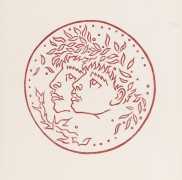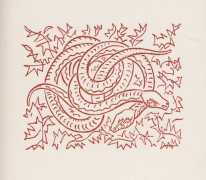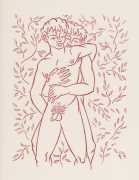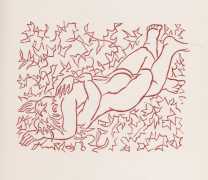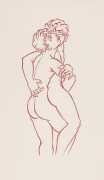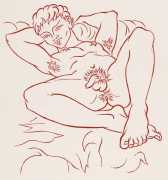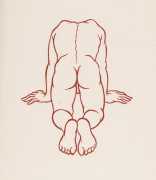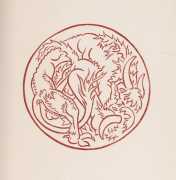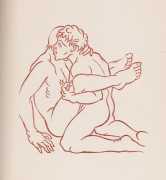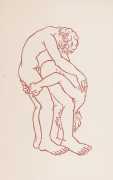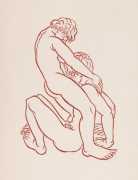
Marcel Jouhandeau, the author of the semi-autobiographical novel Tirésias, tussled throughout his life with the tensions between religion, gender and sexuality. He grew up in a household dominated by women, especially his Catholic grandmother and a young woman friend who introduced him to Catholic mysticism, but he was always more attracted physically to men, which provoked enormous guilt as being offensive to his religion. His feelings of shame did not prevent him from engaging in numerous homosexual acts, and his whole life alternated between a celebration of the male body and the mortification of sexuality. In 1914, during a mystical crisis, he burned his manuscripts and attempted suicide.
He recovered, however, and had a successful career as a writer. When he was forty he married a dancer, Élisabeth Toulemont, former mistress of Charles Dullin and an intimate friend of Jean Cocteau and Max Jacob, who hoped to rid him of his homosexual leanings. He wrote a work of Christian moralism (De l’abjection) before, to the dismay of his wife, falling again into the arms of men, an experience he wrote about in Chronique d’une passion, Eloge de la volupté, and Tirésias.
Ed Madden of the University of South Carolina has written an excellent analysis, ‘The Anus of Tiresias: Sodomy, Alchemy, Metamorphosis’, about how gay men can experience penetration as an exploration of gender boundaries. In his introduction he writes ‘In western literature of the twentieth century the mythical figure of Tiresias often functions as a cultural shorthand for non-normative sexual identities and pleasures. In Marcel Jouhandeau’s 1954 erotic novel, Tirésias, a bisexual man renames himself as Tiresias after being anally penetrated by a young male hustler. While the novel has been noted as a celebration of anal sexual pleasure, penetration can be seen as part of a larger metaphorical language of cross-gender sexual transformations, located in the assumption of a Tiresian identity and in the related esoteric language of alchemy. Sodomy, in Jouhandeau’s novel, creates a transformed and very queer sexual identity that is emphatically not male.’
You can read the whole of Ed Madden’s article by requesting a PDF version of it from him here.
Elie Grekoff’s twenty sanguine (red ochre) illustrations to Tirésias (fifteen in the text and five additional plates) are a wonderfully tender evocation of gay intimacy, the recurring element of stars/flames/hair resonant of the heat and passion of shared desire.
Tirésias was published by Gaston Gallimard in a numbered limited edition of 150 copies.


